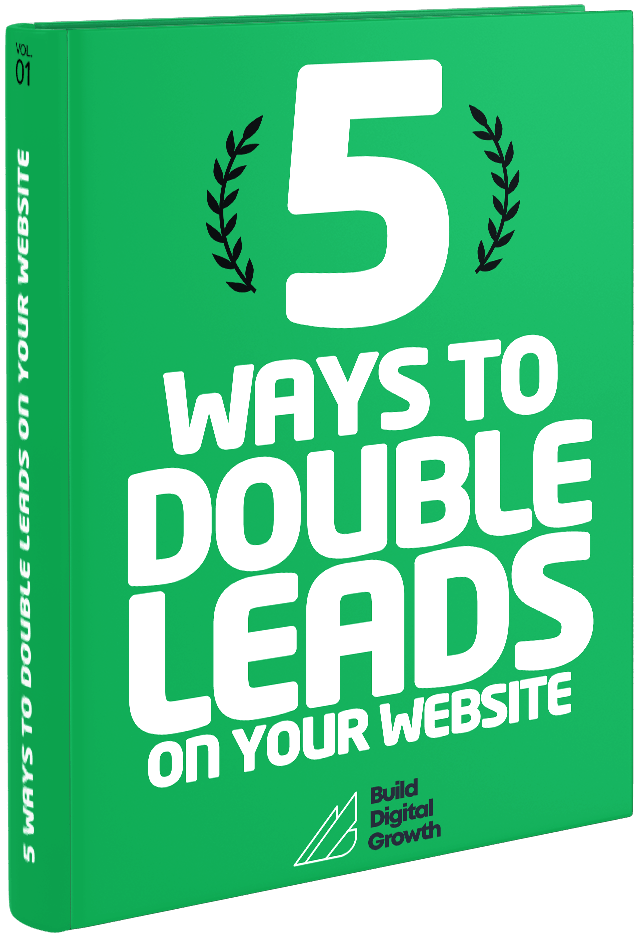A lot of small business owners tend to overlook the aesthetic appeal of their company website, focusing instead on social media which is understandably free and easy to setup. What they don’t know is that a great website helps extend their reach, increases brand awareness and reputation, and impacts their presence on the internet. A well-designed website sets the tone for your company’s culture, brand, and value. It is also helpful in boosting your SEO (search engine optimization), and increasing your website’s ranking. This then allows people to find your business on the internet with the help of your search engine’s algorithms.
Putting up your own website may be easy and save you some money at the beginning but it’s gonna cost you a lot in the long run, unless you really know what you’re doing. An unprofessional-looking website will not convey a clear brand message and only hurt your reputation.
1. It Increases Customer Conversion/Engagement
Having a well-designed and well-organized website can help your customers quickly find what they are looking for. This will reduce the likelihood that they leave the site empty-handed. What tabs must your website visibly have and where should they be located?
- Logo: this must be found at the left side of the web page and allows users to go back to the home page when clicked.
- Contact– this tab must contain your complete contact information, located at the bottom of the page.
- Social media icons– these must be at the top right of your website.
Once this has been set up, you can ask a few people to try navigating your website and ask for feedback on user experience. You can also use the A/B testing method which tests two groups of people using two slightly different versions of your website. Otherwise, keeping it clean and organized should be enough.
A study conducted on health websites allowed researchers to identify the trust factors that design elements and content give to web visitors. 94% of the participants claimed that the design elements made the most impact while 6% said the actual content had the most effect the website’s credibility. The data gathered from this study hold the same basic principles that can be applied to other industries. What elements should you avoid?
- Slow-loading website pages
- Hard-to-read small prints
- Boring web design that lacks colour
- Busy or complex layouts
- Pop-up advertisements and flamboyant ads
Avoiding these pitfalls will ensure that you’ll get the conversions you want and need.
2. It Tells Your Company’s Story and Represents Your Brand
Your website directly reflects your branding so make sure to make it credible. It would also be helpful if you use the same colours and elements as your print marketing collateral such as brochures and digital ads which will help connect it to your brand and boost how users perceive it. A user-friendly website that is inviting also helps customers feel confident in your services and more likely to reach out to you. This increases their brand trust and likelihood for referral in the future.
How can your website be perceived as a credible one?
- Looks professionally designed
- Arranged in a logical way
- Provides a useful set of frequently asked questions (FAQ) and answers
- Provides articles/blogs containing citations and references
- Shows author’s credentials
- Provides an archive of past content (where appropriate)
- Provides links to outside sources and materials
- As up-to-date as possible
- Frequently linked to by other credible sites
Your website’s content, as well as call-to-action, plays a major role when it comes to conversions. When writing CTA, consider using the word “free” which is said to increase sign-up rate by 4.2%.
Well-written and useful content is another characteristic a credible website has. If you want to further increase brand trust, share blogs on your social media channels occasionally. In doing so, users will perceive you as an industry leader, making them go to your website for advice and expertise.
3. It Is Built for Search Engine Optimisation
Based on a survey, 85% of consumers use Google to help them find information about products before they make a purchase. This is one reason why when considering a website build or redesign, it’s important to always have SEO in mind.
A lot of people have been applying parallax design on their websites. Parallax scrolling is a special scrolling technique where background images throughout a web page move slower than foreground images, creating an illusion of depth on a two-dimensional site. However, parallax scrolling is not good for SEO. Search engines like to see websites that provide several, content-rich pages to users. Parallax sites are usually just one or two pages at most and having multiple H1 headers on the same page which is not SEO friendly either.
A study also showed that 68% of users in the United States are using the internet using a smartphone. This is why content should be readable across multiple devices, browsers, and platforms. Moreover, when a user is using a mobile device and searching for a business or item, Google’s newest algorithm update prioritise those websites that have a responsive (mobile) website.
4. It Has An Aesthetic Appeal
Every great website is designed with three important factors: logic, art, and creativity. A beautiful website makes its users unconsciously happy, making them stay longer and navigate more. Furthermore, a positive emotional appeal can turn into solid action.
Colour has a big influencing effect on the consumer buying behaviour and plays a major role in marketing products. According to a study, it accounts for 85% of the reason why someone decides to purchase a product. This is why you should consider your purpose and audience so you can use colours the right way.
- Big bold red or blue fonts for headlines can help develop a feeling of trust.
- Blue, purple, and green are preferred by women and they dislike grey, orange, and brown.
- Blue, green, and black are preferred by men and they dislike purple, orange, and brown.
- Yellow is used for warnings.
- Green is ideal for environmental and outdoor products.
- Orange is a fun colour that can create a sense of haste or impulse.
- Black adds a sense of luxury and value.
- Primary colours preferably red are best for your call to action.
- Use a little bit of white here and there.
Conclusion
Your website’s design can make or break your online reputation so make sure to take advantage of the opportunity to make an impact on your audience. Invest in a professionally designed website to ensure your company’s success.










